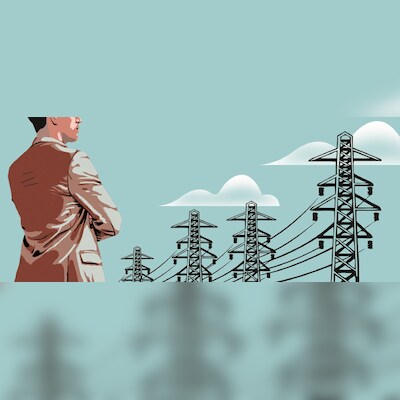)
The Government of India proposes to set up an additional minimum 80 GW coal-based capacity by 2031-32: Naik | Illustration: Ajay Mohanty
India’s total installed power generation capacity has grown around 80 per cent over the last 10 years to 446,190 MW (4.46 GW) in June 2024, Parliament was informed on Monday.
The installed capacity, which was 248,554 MW in March 2014, reached 446,190 MW in June, the Union Minister of State for Power Shripad Naik said.
In a reply to the Rajya Sabha, he said the installed capacity of coal-based power has increased from 139,663 MW in March 2014 to 210,969 MW in June 2024.
While the installed capacity of renewable sector has increased from 75,519 MW in March 2014 to 195,013 MW in June 2024, the minister added.
The Government of India proposes to set up an additional minimum 80 GW coal-based capacity by 2031-32, Naik said.
He further said 195,181 circuit kilometer (ckm) of transmission lines, 730,794 MVA of transformation capacity and 82,790 MW of inter-regional capacity have been added, connecting the whole country into one grid running on one frequency with the capability of transferring 118,740 MW from one corner of the country to another.
“India’s grid has emerged as one of the largest unified grids in the world. Connecting the whole country into one grid has transformed the country into one unified power market,” he added.
Now, the distribution companies (discoms) can buy power at cheapest available rates from any generator in any corner of the country, thereby enabling cheaper electricity tariffs for consumers.
Besides, 2,927 new substations have been added, upgrade of 3,965 existing sub stations has been carried out and 8.5 lakh ckms of high tension and low tension lines have been added/upgraded, the MoS said.
As a result of these measures, the availability of power in rural areas has increased from 12.5 hours in 2015 to 21.9 hours in 2024, Naik said, adding that the availability of power in urban areas is 23.4 hours.
(Only the headline and picture of this report may have been reworked by the Business Standard staff; the rest of the content is auto-generated from a syndicated feed.)
First Published: Jul 29 2024 | 3:40 p.m IS

